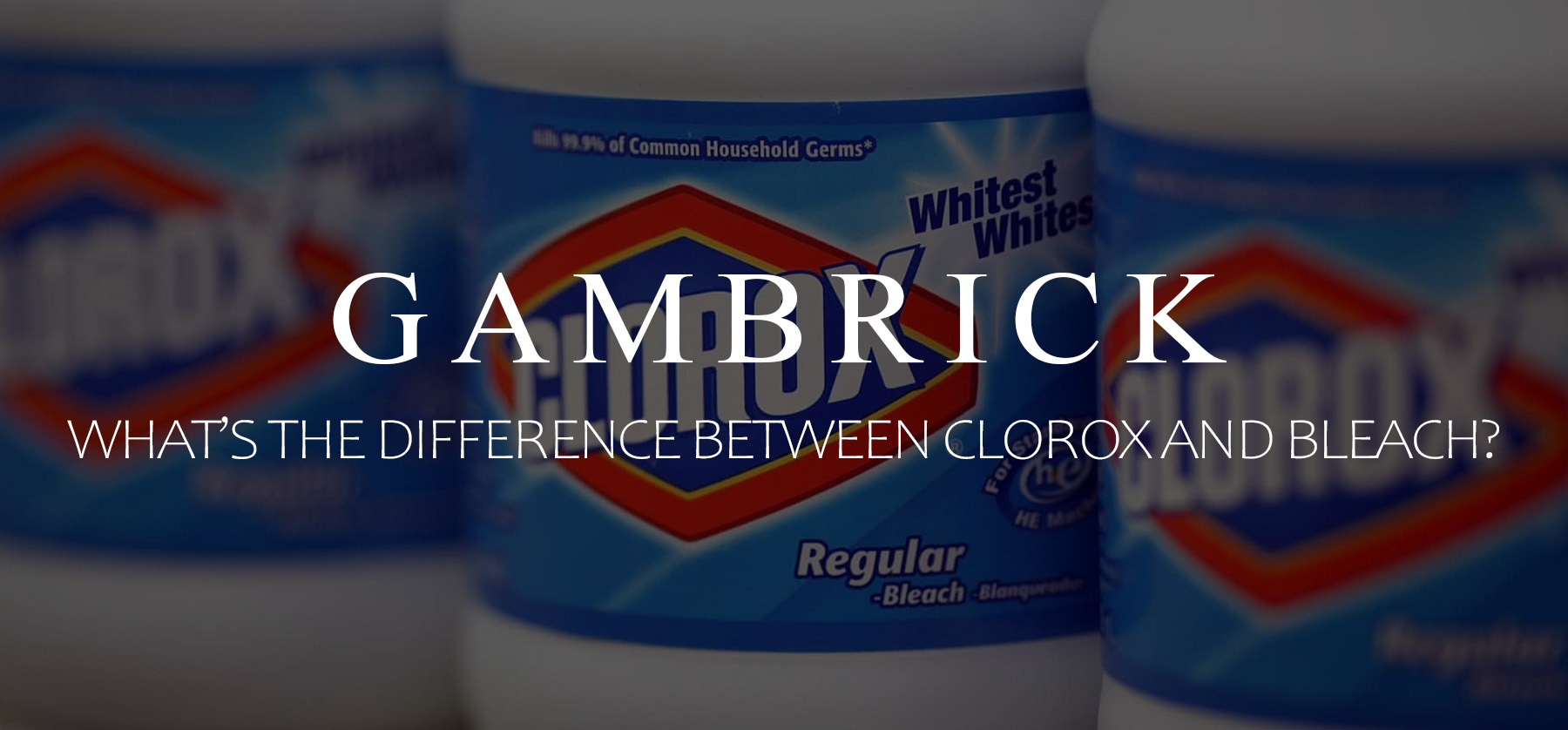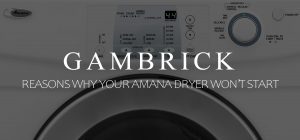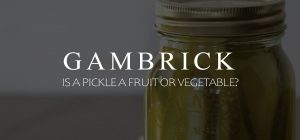What’s The Difference Between Clorox And Bleach?
There isn’t much difference between Clorox and bleach. Bleach is a chemical compound used as a cleaning agent, whitener, and disinfectant, while Clorox is a brand name of bleach made by the company Clorox, hence the name Clorox bleach. The only difference between Clorox bleach and regular bleach is that Clorox bleach has a higher concentration of sodium hypochlorite (NaOCl), a powerful oxidizing agent and the active ingredient that cleans and kills germs, which makes it more effective at cleaning. However, there isn’t much difference between Clorox and other brands of bleach in terms of their basic ingredients and functions.
Bleach is a chemical cleaning product used in households around the world. It’s typically used in liquid form, though powder products are also available. A few drops of bleach can whiten whites or disinfect and clean surfaces.
“Bleach” is a broad term for a diluted solution of sodium hypochlorite and water used industrially and domestically to clean, whiten, and remove stains. Regular Bleach and Clorox Bleach are primarily made from water and sodium hypochlorite (NaOCl) with small amounts of other ingredients used to stabilize the formula and improve cleaning, disinfecting, and whitening.
Clorox is a specific brand of bleach and other cleaning products. The company, Clorox, is well-known for its bleach but also produces other cleaning and disinfecting products. Their signature bleach is essentially a specific formulation of sodium hypochlorite, often with additional components to enhance its cleaning and disinfecting properties.
While all Clorox bleach is bleach, not all bleach is Clorox.
What Is Bleach?
“Bleach” is a broad term for a category of chemicals used for cleaning, disinfecting, and removing stains and colors from objects. Bleach works by the process of oxidation, or the alteration of a compound by the introduction of oxygen molecules. The most common type of bleach is a solution of sodium hypochlorite (NaOCl) in water. This type of bleach is commonly used in households and laundry facilities for its ability to remove stains, brighten clothes, and disinfect surfaces. The most popular brand of bleach is Clorox bleach, which is made by the company Clorox.
- Another form of bleach is oxygen bleach, or color-safe bleach, which contains hydrogen peroxide or a compound that releases hydrogen peroxide.
- Oxygen bleach is less harsh, safe for most fabrics, and can be used for a wider variety of cleaning tasks.
When used properly, bleach is a powerful cleaner for household chores, but it can be hazardous.
- It’s a potent chemical that can cause harm if ingested or if it comes into contact with your skin or eyes, and it should be used with caution.
- Bleach can also react dangerously with other chemicals, so you should never mix bleach with other cleaning products unless you’re certain it’s safe to do so.
Clorox bleach and regular bleach are essentially the same mixture of water, sodium hypochlorite (NaOCl) and small amounts of other ingredients. However, the difference is that Clorox uses about 6% sodium hypochlorite in their bleach vs the 3-4% found in most generic bleach. This makes Clorox bleach stronger and more effective at cleaning, whitening, and disinfecting. But it’s also more expensive.
What Is Sodium Hypochlorite (NaOCl)?
Sodium hypochlorite (NaOCl), a.k.a. liquid bleach, is a white powder that creates a light greenish liquid called bleach when dissolved in water. It’s the active ingredient in bleach that whitens whites, disinfects, and cleans surfaces. It’s a non-organic chemical with the chemical formula NaOCl.
| Sodium Hypochlorite | NaOCl |
| Molecular Weight/ Molar Mass | 74.44 g/mol |
| Density | 1.11 g/cm³ |
| Boiling Point | 101 °C |
| Melting Point | 18 °C |
Sodium hypochlorite solutions are commonly referred to as bleach, but household bleach also contains small amounts of other compounds like sodium chloride, sodium carbonate, and sodium hydroxide which increase product stability and help maintain pH. Regular bleach usually contains about 3-4% sodium hypochlorite while Clorox contains about 5-7.5%, depending on the formula.
Sodium hypochlorite has a strongly alkaline pH, which can irritate and possibly burn the skin. It’s also very dangerous if it gets in your eyes or you inhale too much. It can also be fatal if swallowed. If you swallow bleach or get it in your eyes, get medical help immediately.
When sodium hypochlorite is dissolved in water it also forms hypochlorous acid, HOCl, a weak acid with strong oxidizing qualities. This is what’s responsible for bleach’s bleaching effect. It also has antimicrobial effects which help disinfect and clean surfaces.
Clorox vs Bleach
“Bleach” is a general term for a chemical cleaning agent made primarily from water, sodium hypochlorite (NaOCl), and small amounts of other ingredients used to stabilize the formula and improve cleaning, disinfecting, and whitening. “Clorox” is a specific brand of bleach and other cleaning products. Both regular and Clorox Bleach whiten whites, kill germs, and clean surfaces, but Clorox is stronger because it contains around 6% sodium hypochlorite vs regular bleach which contains around 3-4%.
Bleach is a chemical solution used as a whitener, disinfectant, and cleaning agent while Clorox is a company that makes various products, including Clorox Bleach.
Here is a comparison:
- Composition: Both Clorox and generic bleach mainly contain sodium hypochlorite as their active ingredient, which makes them effective for removing stains, whitening, and disinfection. However, Clorox has a sodium hypochlorite concentration of around 6% but generic bleaches typically use just 3-4%.
- Branding: Clorox is a well-known brand, while “bleach” is a generic term.
- Variety of Products: Clorox offers a variety of products, including toilet bowl cleaners, disinfecting wipes, and laundry detergent, which have different compositions and specific purposes. Generic bleach is typically a stand-alone product and doesn’t come in different forms.
- Cost: Generic bleach is usually less expensive than Clorox.
- Performance: Both Clorox and generic bleach will perform the basic functions of bleach (cleaning, whitening, and disinfection.) However, Clorox Bleach generally does them better because it contains more sodium hypochlorite.
- Safety Considerations: Both Clorox and generic bleach should be used in a well-ventilated area, not mixed with other cleaning chemicals, and stored safely out of reach of children.
While the primary functions of Clorox and generic bleach are similar due to their common active ingredient, Clorox Bleach generally has more sodium hypochlorite and other ingredients which makes it a stronger cleaning solution vs generic bleach.
Is Clorox Better Than Generic Bleach?
Clorox and generic bleach are essentially the same and clean in the same way. They’re both very effective at cleaning surfaces, disinfecting, and whitening whites. However, Clorox is stronger than regular bleach because it contains more of the active ingredients sodium hypochlorite. This makes it more effective than generic bleaches.
Here are a few considerations:
- Concentration of Sodium Hypochlorite: Both Clorox and generic bleach contain the same active ingredient, sodium hypochlorite. If the concentration of this compound is the same in both products, their whitening and disinfecting capabilities would theoretically be the same. But Clorox contains about 6% while generic bleaches have around 3-4%. This makes Clorox stronger and more effective.
- Brand Trust: Clorox is a respected brand that makes high-quality cleaning products.
- Additional Ingredients: Clorox often include additional ingredients, like fabric protectants or fresh scents, that aren’t typically found in generic bleaches. Whether these additives are seen as beneficial depends on what you use the bleach for.
- Cost: Generic bleach is usually less expensive than Clorox.
- Safety: Bleach of any kind is dangerous. Never inject it, put it on your skin or in your eyes, and don’t breathe in the fumes. And never mix it with other cleaners unless you’re sure it’s safe to do so. Keep bleach away from kids and consider wearing protective gear when using it.
Whether Clorox is “better” than generic bleach depends on how you plan on using it. If you need additional ingredients or a stronger solution, Clorox is the better choice. But if you want a cheaper product to clean your floors with, generic bleach should be fine.
Should I Use Clorox Or Regular Bleach?
Both Clorox and generic bleach contain sodium hypochlorite as the active ingredient, which is the compound responsible for cleaning, whitening, and disinfecting. If you’re using bleach for general cleaning, laundry, or disinfection purposes, either option would typically be effective. But Clorox has around 6% sodium hypochlorite vs the 3-4% found in generic bleach. Some formulas also contain other ingredients like scents and fabric softeners. So if you need a stringer solution or additional ingredients, Clorox is the better choice.
- Concentration: The concentration of the active ingredient can vary between brands. Usually, Clorox Regular-Bleach has a higher concentration of sodium hypochlorite (around 6-7%) compared to generic bleaches. If you need stronger bleach, Clorox is the best choice.
- Price: Generic bleach is usually less expensive than name-brand bleach like Clorox. If price is important to you, and you’re using bleach for standard purposes (e.g., laundry or cleaning), generic bleach is the best choice.
- Additional Features: Some Clorox bleach comes with added features, like scents, or easy-to-use containers.
- Quality and Consistency: Clorox is a respected brand with high-quality products and a consistent formula you can trust. If reliability is important to you, you might prefer to use Clorox.
Both Clorox and generic bleach are effective cleaners. The best choice depends on your needs, preferences, and budget.
I prefer Clorox because it’s a bit stronger than generic bleach and always the same every time I buy it. I’ve tested generic brand bleaches and their strength never feels quite the same. Even though they’re less expensive per gallon, I end up using more because they’re weaker so the price difference is negligible.
All Bleach Is Not Created Equal
Bleach is a fantastic all-around cleaner that disinfects, cleans, and whitens whites. It has antimicrobial qualities that can kill microbes on hard non-porous surfaces. It’s commonly used to clean bathrooms, kitchens, and laundry rooms or in the wash. All bleach is not created equal so you need to choose the correct formula based on what you’re cleaning.
All bleach is basically just a diluted solution of sodium hypochlorite and water. However, Clorox contains between 5-7.5% sodium hypochlorite based on the formula while generic bleach contains just 3-4%. Regular bleach is generally fine for cleaning surfaces or for use in the wash, but Clorox is stronger.
- “Regular” bleach is what you want for disinfecting surfaces. If there is anything other than the word “Regular” describing your bleach, it’s probably for laundry.
- Splash-less and scented bleaches contain additional chemicals that are designed for cleaning clothes, not surfaces.
- Splash-less bleach contains a soap/sudsing agent which changes the viscosity of the liquid bleach, making it easier to pour.
- Scented Bleach is popular for laundering, but dyes or perfumes can have a negative impact when used on anything which comes in contact with food, such as a countertop.
When using regular or Clorox Bleach, choose a regular formula for cleaning hard surfaces. If your bleach has additional qualities like scents, use it for laundry.
Clorox Disinfecting Bleach vs Regular Bleach
“Bleach” is a general term for a chemical cleaning agent made primarily from water, sodium hypochlorite (NaOCl), and small amounts of other ingredients used to stabilize the formula and improve cleaning, disinfecting, and whitening. “Clorox” is a specific brand of bleach and other cleaning products. Both regular and Clorox Disinfecting Bleach whiten whites, kill germs and clean surfaces. However, Clorox is stronger because it contains around 6-7.5% sodium hypochlorite vs regular bleach which contains around 3-4%.
- Brand: Clorox is a specific brand known for its quality and efficacy. Regular bleach refers to any generic brand of bleach, which could vary in terms of effectiveness and quality control.
- Concentration: Clorox Disinfecting Bleach typically contains a higher concentration of sodium hypochlorite (the active ingredient), around 6-7.5%, making it more potent as a disinfectant compared to generic bleaches.
- Additional Ingredients: Clorox Disinfecting Bleach often includes additional ingredients to enhance the product’s performance, such as reducing fabric wear, controlling odor, or adding a pleasant scent. Regular bleach typically doesn’t contain these additives.
- EPA Registration: Clorox Disinfecting Bleach is an EPA-registered disinfectant. This means it’s been tested and certified to kill certain bacteria and viruses. Not all regular bleaches have this certification, though they still generally possess strong disinfecting properties.
- Cost: Generally, Clorox Disinfecting Bleach is more expensive than regular bleach due to the brand name, additional hypochlorite and added features.
- Versatility: Both can be used for similar purposes such as laundry and disinfecting surfaces, but the added ingredients in Clorox Disinfecting Bleach make it more suitable for certain tasks.
While Clorox Disinfecting Bleach and regular bleach can clean and disinfect, Clorox has a higher concentration of the active ingredient and additional features, which make it more effective for certain uses.
What Chemicals Make Liquid Bleach?
The primary chemical in common household bleach is sodium hypochlorite (NaOCl). This compound is made by combining chlorine and sodium hydroxide. It’s diluted in water to create a safer, more usable solution called bleach. The general process of producing sodium hypochlorite is known as the chloralkali process, where saltwater (brine) is electrolyzed to produce chlorine gas, hydrogen gas, and sodium hydroxide. The chlorine gas is then dissolved in a cold and diluted sodium hydroxide solution to produce sodium hypochlorite.
The chemical reaction is as follows:
Cl2 + 2NaOH → NaCl + NaClO + H2O
This reaction signifies that one molecule of chlorine (Cl2) reacts with two molecules of sodium hydroxide (NaOH), yielding sodium chloride (NaCl), sodium hypochlorite (NaClO), and water (H2O).
Small amounts of other chemicals may be added to bleach to increase its effectiveness.
Keep in mind that bleach should be handled with care due to its strong oxidizing properties. It can cause harm if it comes into contact with the skin or eyes. It can also react with other household chemicals to produce toxic gases.
Is Clorox 100% Bleach?
No, Clorox is not 100% bleach. Most Clorox bleach products contain a concentration of sodium hypochlorite (which is the active ingredient in bleach) along with water and a small amount of other ingredients. The exact composition varies by product, but for regular Clorox liquid bleach, sodium hypochlorite usually makes up around 6-7% of the product. The rest of the ingredients are mostly water, a small amount of salt, sodium carbonate, sodium chlorate, sodium hydroxide, and sodium polyacrylate.
The other ingredients serve various purposes. For example, sodium hydroxide is used to control pH, and sodium polyacrylate can be used as a thickener or to stabilize the formulation. The remaining components improve the product’s effectiveness, usability, and stability.
100% Bleach (or 100% sodium hypochlorite) would be extremely hazardous and isn’t suitable or safe for household use.
The diluted form of bleach found in products like Clorox is very effective for household cleaning and is much safer to handle.
Is Clorox Bleach Toxic?
Yes, Clorox bleach, like all bleach products, is toxic if improperly used. Sodium hypochlorite, the active ingredient in Clorox bleach, can be harmful or fatal if swallowed, and it can cause skin and eye irritation.
Clorox bleach releases chlorine gas when it reacts with certain other chemicals, such as ammonia or acids. This can happen if bleach is mixed with other cleaning products. Never mix bleach with anything other than water unless the product instructions specifically say it’s safe to do so. Inhaling the fumes from such a reaction can cause serious respiratory damage.
Exposure to high concentrations of bleach or long-term exposure can be harmful, potentially causing the following:
- Can be fatal if swallowed
- Damage to your eyes
- Respiratory problems
- Skin burns
- Damage to the nervous system
- Other health issues.
When used properly, Clorox bleach is safe to use for a variety of cleaning and disinfecting tasks.
Here are some general safety guidelines to follow:
- Always use bleach in a well-ventilated area.
- Wear protective clothing and eye protection if splashing is possible.
- Store it out of the reach of children and pets.
- Never swallow bleach.
If someone ingests bleach or gets it in their eyes, get medical help immediately. If bleach is spilled on the skin, it should be rinsed off immediately with plenty of water.
How Strong Is Clorox Bleach?
Clorox Regular Bleach, often referred to as Clorox’s standard household bleach, generally contains a concentration of sodium hypochlorite (the active ingredient in bleach) of around 5-6%. This is sufficient for most household cleaning, disinfecting, and laundry uses. However, Clorox Disinfecting Bleach has around 6-7.5%.
The concentration of sodium hypochlorite can vary among different products, even within the Clorox brand itself. For instance, high-efficiency (HE) bleach products or those intended for industrial or professional usually contain more sodium hypochlorite.
As a comparison, regular generic bleach usually has around 3-4% sodium hypochlorite. So Clorox is a little stronger than most generic bleach products.
Summary: What’s The Difference Between Clorox And Bleach?
There isn’t much difference between Clorox and bleach. Bleach is a chemical compound used as a cleaning agent, whitener, and disinfectant, while Clorox is a brand name of bleach made by the company Clorox, hence the name Clorox bleach. The only difference between Clorox bleach and regular bleach is that Clorox bleach has a higher concentration of sodium hypochlorite (NaOCl), a powerful oxidizing agent and the active ingredient that cleans and kills germs, which makes it more effective at cleaning. However, there isn’t much difference between Clorox and other brands of bleach in terms of their basic ingredients and functions.
Bleach is a chemical cleaning product used in households around the world. It’s typically used in liquid form, though powder products are also available. A few drops of bleach can whiten whites or disinfect and clean surfaces.
“Bleach” is a broad term for a solution of sodium hypochlorite and water used to clean, whiten, and remove stains. Regular Bleach and Clorox Bleach are primarily made from water and sodium hypochlorite (NaOCl) with small amounts of other ingredients used to stabilize the formula and improve cleaning, disinfecting, and whitening.
Clorox is a specific brand of bleach and other cleaning products. The company, Clorox, is well-known for its bleach but also produces other cleaning and disinfecting products. Their bleach is a mix of sodium hypochlorite and other components to enhance its cleaning and disinfecting properties.
While all Clorox bleach is bleach, not all bleach is Clorox.
If you have any questions or comments about Clorox vs Bleach, email any time.























